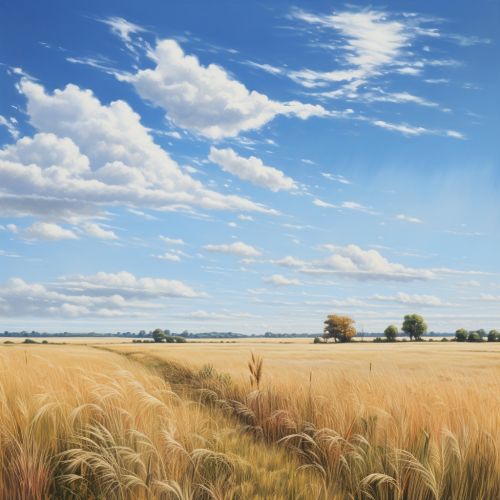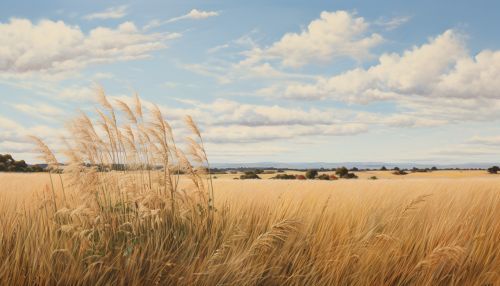Pampas
Geography
The Pampas are a vast geographical region that extends through the southern parts of South America, covering large portions of Argentina, Uruguay, and Brazil. The term "Pampas" is derived from the Quechua word 'pampa', which translates to "plain". The Pampas are characterized by their flat, fertile plains, which are primarily used for agriculture.


Climate
The Pampas have a temperate climate, with rainfall distributed evenly throughout the year. The region experiences warm summers and cool winters, with temperatures ranging from 10 to 30 degrees Celsius. The Pampas are also known for their strong winds, known as the Pampero, which originate from the Andes and sweep across the plains.
Flora and Fauna
The Pampas are home to a diverse range of flora and fauna. The vegetation is dominated by tall grasses, including species such as Pampas grass and the Pampa's oat grass. The region is also home to a variety of wildlife, including the Pampas deer, the Pampas fox, and the Greater Rhea, a large flightless bird native to South America.
Agriculture
The Pampas are one of the most agriculturally productive regions in the world, thanks to their fertile soil and temperate climate. The region is a major producer of wheat, corn, and soybeans, and is also known for its beef and dairy industries. The Pampas are often referred to as the "breadbasket" of Argentina, due to their significant contribution to the country's agricultural output.
Human Settlement
The Pampas have been inhabited by humans for thousands of years, with evidence of prehistoric settlements found throughout the region. Today, the Pampas are home to several major cities, including Buenos Aires, the capital of Argentina, and Montevideo, the capital of Uruguay. Despite the urbanization of certain areas, much of the Pampas remain rural, with farming and ranching being the main sources of livelihood.
Cultural Significance
The Pampas hold a significant place in the cultural identity of Argentina, Uruguay, and southern Brazil. The region is often associated with the Gaucho culture, a traditional way of life centered around cattle ranching. Gauchos are often depicted as skilled horsemen and are a symbol of the Pampas' rural heritage.
Environmental Concerns
Like many other regions around the world, the Pampas face a number of environmental challenges. These include soil erosion, deforestation, and the loss of biodiversity due to agricultural expansion. Efforts are being made to address these issues and promote sustainable practices within the region.
